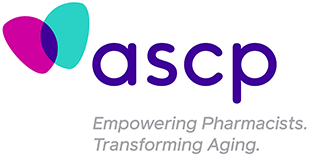Thank you for your interest in CCO content. As a guest, please complete the following information fields. These data help ensure our continued delivery of impactful education.
Become a member (or login)? Member benefits include accreditation certificates, downloadable slides, and decision support tools.

Professor
School of Nursing
University of Maryland
Nurse Practitioner
Roland Park Pace
Baltimore, Maryland
Barbara Resnick, PhD, CRNP, has no relevant conflicts of interest to report.
Respiratory syncytial virus (RSV) is a major cause of severe lower respiratory tract infections in older adults and tends to be most common in immunocompromised individuals and individuals with underlying cardiovascular disease. RSV infections develop in approximately 10% of older adults, and the impact of the disease is similar to that of influenza A, causing significant changes in function, cognition, and quality of life, as well as increasing the risk of stroke and myocardial infarction. Although molecular tests (reverse transcription polymerase chain reaction) can provide a rapid diagnosis, there is unfortunately no established, evidence-based treatment for the disease; therefore, symptom management and supportive care remain the only options. Fortunately, early research has shown that RSV vaccines currently under investigation for older adults are effective and may represent the best option for combating this potentially serious disease in older individuals, provided they are utilized.
Barriers to Immunization
Many older adults are hesitant to receive all of the vaccines recommended for their age group. Reasons for this hesitancy may be numerous, including a belief that vaccines are ineffective, a concern that the vaccine will cause pain, fears of getting a fever or malaise, a lack of knowledge on vaccine requirements, cost concerns, concerns that the vaccine will produce the disease it is intending to protect the patient from, and even a desire to contract the disease to facilitate death.
Prior immunization experiences also can influence willingness to get a new vaccine. Indeed, among all determinants of vaccine hesitancy, prior experiences tend to be the biggest determinants of future decisions.
Hesitancy affects all segments of the population but is particularly noted in low-income, Black, and Latinx populations. Social influences of healthcare professionals and peers can impact decisions about getting the vaccine, as can environments and resources that make it easy to access the vaccine.
Motivating Older Adults to Get Immunized
Numerous techniques can be used to motivate older individuals to get immunized (Table 1). Behavior change theories, such as social cognitive theory, are particularly helpful to increase immunization rates. Social cognitive theory suggests that the stronger the individual’s self-efficacy and outcome expectations, the more likely it is that they will initiate and persist with a given activity.
Four sources of information influence self-efficacy and outcome expectations: (1) successful performance of the activity; (2) verbal encouragement; (3) seeing like individuals perform the activity; and (4) elimination of unpleasant physiological and affective states associated with the activity.
Table 1. Motivational Techniques to Increase Immunization for RSV in Community-Dwelling Older Adultsn
Even if not required by law, making immunizations required within communities or states can be highly effective at increasing vaccination rates. Access also is important, and this includes making the vaccine readily available for free at healthcare offices or senior living facilities.
Another effective technique is to use positive motivational approaches vs negative ones that may elicit fear. For example, rather than stressing the risk of the disease and potential negative outcomes, healthcare professionals can try to make it fun and provide little incentives for and/or contests within communities around getting immunized. Healthcare professionals also can stress the altruistic value of getting immunized and the importance of doing this to prevent spreading the infection to family members, particularly those who are very young or old. Finally, it is important to provide older adults with up-to-date and accurate information about the vaccine.
If working within a healthcare facility, some additional approaches can be used to increase vaccination rates. A step approach can be effective in implementing an immunization campaign against RSV. The steps include: (1) identifying a champion; (2) gathering a stakeholder team; (3) establishing the barriers/challenges you need to overcome within your setting (eg, lack of access, lack of knowledge among older residents); (4) establishing solutions for how to overcome those barriers; and (5) making it happen.
Finally, it is important to publicize the immunizations to families. This can be done via newsletters, on posters, or verbally during health talks.
Regardless of setting or community, making immunizations happen is an ongoing process with a continued need to motivate and engage older individuals regarding the value and benefit of the vaccine for them and those around them. Even for those who are most hesitant, it is important to never stop asking!
Your Thoughts?
What approaches do you use with your older patients to encourage them to receive all of their recommended vaccines? Answer the polling question and join the conversation by posting a comment.

Contact Clinical Care Options
For customer support please email: customersupport@cealliance.com
Mailing Address
Clinical Care Options, LLC
12001 Sunrise Valley Drive
Suite 300
Reston, VA 20191


You are now leaving the CCO site. The new destination site may have different terms of use and privacy policy.